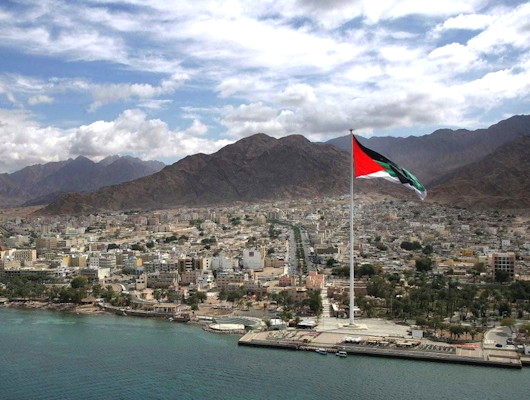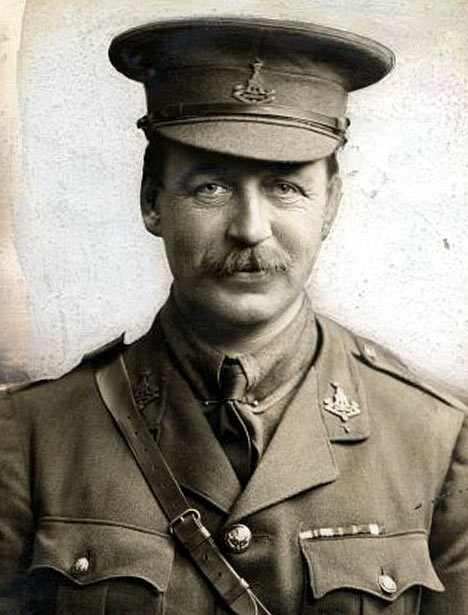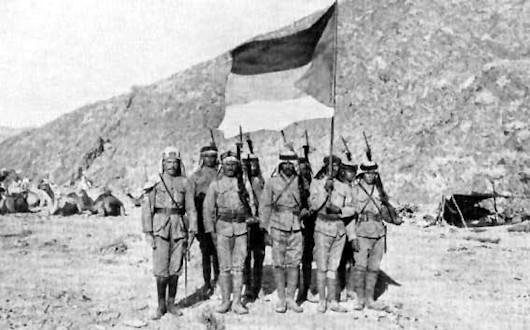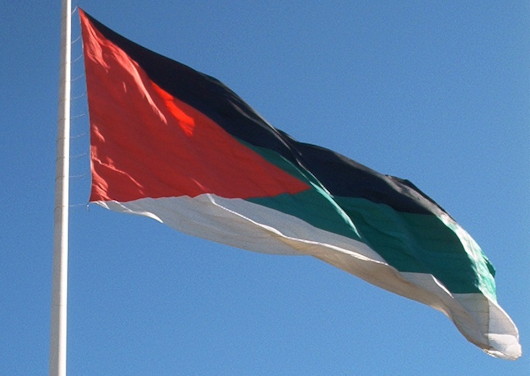
About Andrew Cusack
 Writer, web designer, etc.; born in New York; educated in Argentina, Scotland, and South Africa; now based in London.
Writer, web designer, etc.; born in New York; educated in Argentina, Scotland, and South Africa; now based in London. read more
News
Blogs
Reviews & Periodicals
Arts & Design
World
France
Mitteleuropa
Knickerbockers
Argentina
The Levant
Africa
Cape of Good Hope
Netherlands
Scandinavia
Québec
India
Muscovy
Germany
Academica

The Flag of the Arab Revolt
An English Catholic contribution to Pan-Arabist vexillology
Though often overshadowed by the more theatrical T.E. Lawrence, Sir Mark Sykes (7th baronet) was still by all accounts a remarkable man. Educated by Jesuits in England, Monaco, and Belgium, young Sykes had instilled in him a cosmopolitan sense of adventure by travelling with his mother across the Middle East, Mesopotamia, India, and Asia throughout his childhood. It was during his travels in the provinces of the Ottoman empire that Sykes’s lifelong fascination with Islam began. By the time it was appropriate to go to university he found the atmosphere and formality of Cambridge stifling and left without taking a degree, but not without gaining a reputation for good humour with a special talent for mimicry.
 At 25 Sykes wrote his first book, Dur-ul-Islam, which Kipling found so fascinating he couldn’t put it down until forced to by the necessity of sleep. After forays in the civil and diplomatic services, Sykes was elected to Parliament as the Unionist candidate in Kingston upon Hull. A romantic tory at heart, he disliked being labelled as conservative. “It is impossible to be a Conservative,” Sykes argued, “when there is nothing left to Conserve.”
At 25 Sykes wrote his first book, Dur-ul-Islam, which Kipling found so fascinating he couldn’t put it down until forced to by the necessity of sleep. After forays in the civil and diplomatic services, Sykes was elected to Parliament as the Unionist candidate in Kingston upon Hull. A romantic tory at heart, he disliked being labelled as conservative. “It is impossible to be a Conservative,” Sykes argued, “when there is nothing left to Conserve.”
When the Great War broke out in August 1914, Sykes recruited a batallion of men from his Yorkshire estates alone, but his unique insight into the Ottoman empire was put to good use in military intelligence. In May 1916 he was sent to negotiate the Anglo-Franco-Russian carving-up of Ottoman Asia with Charles Georges-Picot of the Quai d’Orsay.
The question of what the Turks’ Arab subjects themselves wanted only became a question the following month with the beginning of the Great Arab Revolt. This huge undertaking to wrest the Arab peoples from centuries of Turkish rule found a leader in the Sharif and Emir of Mecca, Hussein bin Ali of the Hashemite dynasty, but the uprising needed a symbol to rally round, and Sykes was the man for the job.

The flag of the Arab Revolt that Sir Mark Sykes designed was to be one of the most influential flags in the history of vexillology, launching the four pan-Arab colours into the world of flag design. Black represented the Abbasid dynasty, green for the Fatimids, and white for the Ummayad, all of which was united by a triangle of red for the Hashemites who hoped to rule Arabia.
Twelve modern states today employ designs descended from the flag Sykes designed. Among them is Jordan, now the only land ruled by the Hashemites – the Sauds kicked them out of Hejaz while the brutal slaughter of the 1958 coup deprived them of the Iraqi throne.

Jordan’s Red Sea port of Aqaba was made famous by its capture during the Great Arab Revolt – retold in David Lean’s 1962 film ‘Lawrence of Arabia’ – and it is there today that Sykes’s flag flies from one of the tallest flagpoles in the world.

Search
Instagram: @andcusack
Click here for my Instagram photos.Most Recent Posts
- Burns Tower April 19, 2024
- Patrick in Parliament March 18, 2024
- Articles of Note: 13 March 2024 March 13, 2024
- Cambridge March 9, 2024
- Taken on Trust March 4, 2024
Most Recent Comments
Book Wishlist
Monthly Archives
Categories



Andrew –
Thank you for this interesting history of the flag of the Arab Revolt. I did not know that it was designed by an officer of the British Army.
Harold
Very beautiful flag and symbol of unity which does not exist. Very informative writing. Thanks